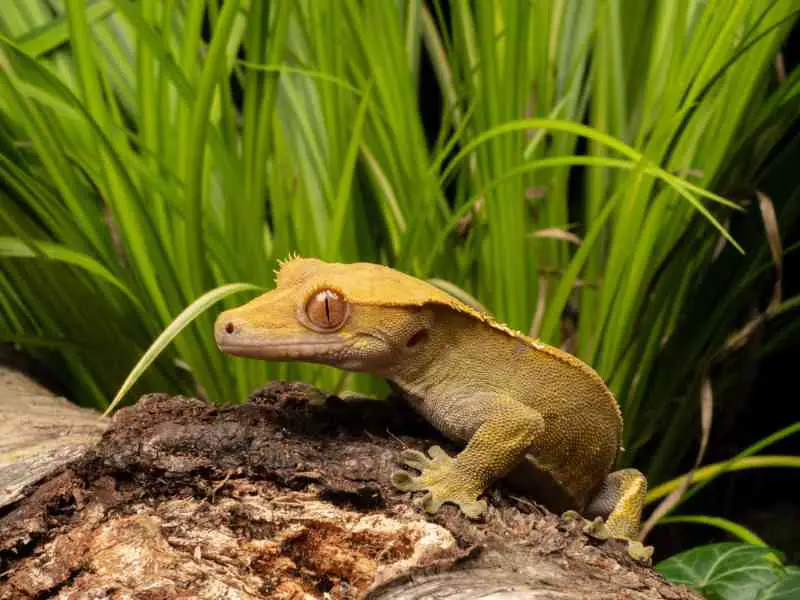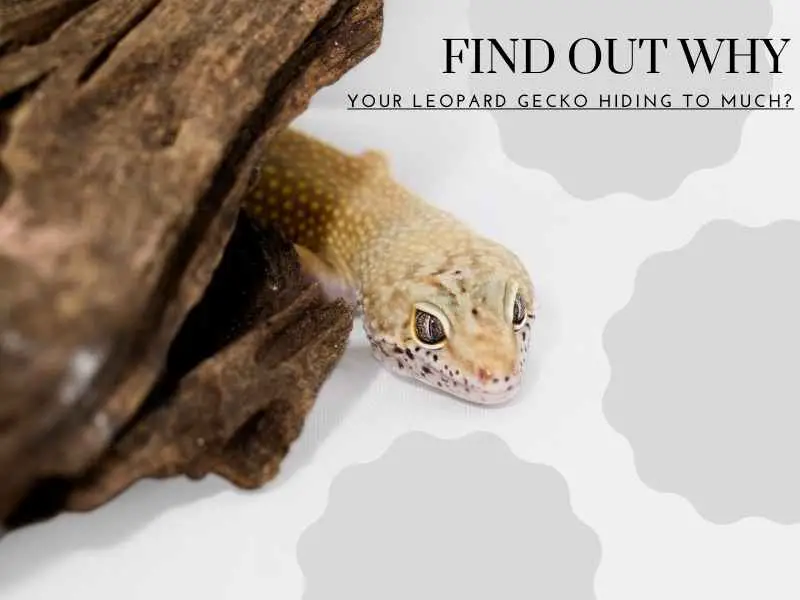All About Horn Worms For Your Crested Gecko

Crested geckos are insectivores, so their diet consists mostly of bugs. In the wild, they eat a variety of small insects, including moths, ants, and beetles. While in captivity, they can be fed a diet of commercially available insects, such as crickets and hornworms.
Hornworms are a type of caterpillar that is often used as food for reptiles and amphibians. They are high in protein and moisture, making them an ideal food source for crested geckos. In addition, hornworms are relatively easy to care for and breed, which makes them a convenient food source for reptile owners.
However, there are a few things to keep in mind when feeding hornworms to crested geckos. First, hornworms should only be offered as occasional treats, as they are high in fat and could lead to obesity. Second, hornworms should be gut-loaded before being offered to crested geckos.
Contents
What are Hornworms?
Hornworms are the caterpillars of hawk moths, and they are considered to be one of the most destructive pests of tomato plants. The larvae are dark green in color and have a horn-like projection on their rear end. They can grow up to four inches in length and are typically found on the underside of leaves.
Hornworms feast on the foliage of tomato plants, which can quickly cause the plant to become defoliated. In addition, the larvae are known to bore into fruit, causing it to become misshapened and unmarketable. While horn worms can be controlled with insecticides, many gardeners prefer to take a more natural approach, such as using predators or parasites.
Can Crested Geckos Eat Hornworms?
Crested geckos are opportunistic feeders in the wild and will eat just about anything they can catch. This includes a variety of insects, such as horn worms. Horn worms are the larvae of hawk moths and can grow to be quite large, making them an excellent food source for crested geckos.
In addition to being a good source of protein, horn worms are also high in calcium, which is essential for bone growth. For these reasons, horn worms can be a healthy and nutritious addition to your crested gecko’s diet.
However, it is important to remember that crested geckos should not eat too many horn worms, as they can be quite high in fat. As with all other aspects of their diet, moderation is key when feeding horn worms to your crested gecko.
Should Crested Geckos Eat Hornworms?
Crested geckos are native to New Caledonia, a group of islands in the Pacific Ocean. Their diet in the wild consists mostly of insects, such as crickets and roaches. However, some people believe that Crested Geckos should also eat hornworms. Hornworms are the larvae of the Manduca sexta, a type of moth.
They are large, green, and have a horn-like projection on their tails. While they are not native to New Caledonia, they are widely available in pet stores. Some people believe that Crested Geckos should eat hornworms because they are a good source of protein and fat. Hornworms also contain chitin, which is believed to be beneficial for Crested Geckos.
Chitin is a material that helps to strengthen the exoskeleton and aids in digestion. The jury is still out on whether or not Crested Geckos should eat hornworms, but there is no doubt that they can be a nutritious addition to their diet.
How Many Hornworms to Feed a Crested Gecko and How Often?
A healthy diet for a crested gecko includes both live insects and fruit. While the exact ratio of insects to fruit will vary depending on the individual gecko, a good rule of thumb is to offer two to three insect meals per week, with the remaining meals consisting of fruit. When choosing insects for your gecko, hornworms are an excellent option.
These caterpillars are relatively large and provide a good source of protein and moisture. In addition, hornworms are easy to find and relatively inexpensive.
When feeding hornworms to your gecko, be sure to offer only as many as they can eat in one sitting. If there are uneaten worms left in the enclosure, they may nibble on your gecko’s tail or climb onto its back.
In general, one or two hornworms per feeding should be sufficient. As with all live insects, it is important to offer gut-loaded hornworms that have been dusted with calcium powder. This will ensure that your gecko gets the nutrients it needs to stay healthy.
How Many Hornworms to Feed Baby vs Adult Crested Gecko?
The amount of food you give your pet Crested Gecko depends on its age and size. A general guideline is to offer 2-3 prey items per week for juveniles (4-8 months old) and 3-5 prey items per week for adults (9 months and older). If you are feeding hornworms, a good rule of thumb is to offer 5-6 worms per juvenile and 8-10 worms per adult.
However, it’s important to keep an eye on your pet’s weight and adjust the feeding schedule accordingly.
If your gecko starts to look overweight, cut back on the number of meals. Conversely, if it starts to look underweight, increase the frequency of feedings. By monitoring your pet’s weight and appetite, you can ensure that it gets the nourishment it needs to thrive.
How to Feed Them Hornworms
When feeding hornworms to your crested gecko, it is important to take a few precautionary measures. First of all, make sure that the worms have been properly gut-loaded and dusted with calcium powder. Secondly, cut the worms into pieces that are no larger than the width of your gecko’s head.
This will help to prevent indigestion and ensure that your lizard gets the nutrition it needs. Finally, always supervise your gecko while it is eating to make sure that it does not swallow any pieces that are too large.
Throwing Out the Remaining Hornworms – Safely
Hornworms are a popular choice, but after your gecko is finished eating, you’ll need to safely dispose of the leftovers. First, it’s important to ensure that the hornworms are actually dead. If they’re still alive, they could pose a escape risk or potentially hurt your gecko.
The best way to kill them is to place them in the freezer for at least 24 hours. Once they’re dead, you can place them in a zip-top bag and throw them away in your regular trash.
If you’re concerned about attracting pests, you can also put the bag in the freezer until trash day. This method is safe and easy, and it will ensure that your crested gecko stays healthy and happy.
Other Feeder Insects Besides Hornworms
While hornworms may be a popular choice when it comes to feeding crested geckos, there are actually a number of other feeder insects that are better for them.
For example, crickets are a good source of protein and can be easily gut-loaded with vitamins and minerals. Mealworms are also a good option, and they’re high in fat and calcium, which is important for crested geckos.
Waxworms are another fatty option that’s also high in calcium, but they should only be fed in moderation as they can cause obesity.
Finally, silkworms are an excellent choice as they’re high in protein and low in fat. So, if you’re looking for alternative feeder insects for your crested gecko, these are some great options to consider.
Conclusion
Hornwoms are a great source of food for your crested gecko. They are packed with nutrients and are a good size for your gecko to eat. However, there are a few things you need to keep in mind when feeding hornworms to your gecko.
First, hornworms should only be fed as an occasional treat.They should not make up the bulk of your gecko’s diet.
Second, hornworms should be gut-loaded before being fed to your gecko. This means that they should be fed a nutritious diet for a few days before being offered to your gecko. This will ensure that they are as nutritious as possible.
Finally, hornworms should be cut into small pieces before being offered to your gecko. This will help to prevent choking and ensure that your gecko can digest them properly. If you follow these simple guidelines, hornworms can be a great addition to your gecko’s diet.




